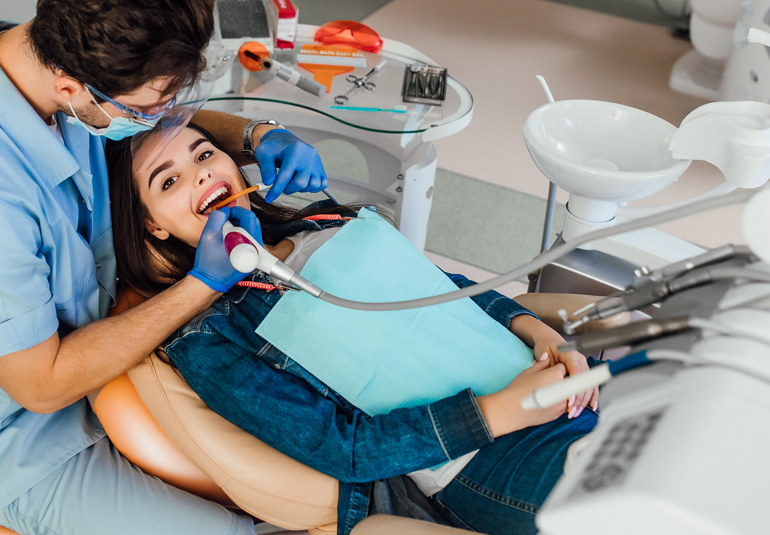

Dental treatment has come a long way in recent years, with ongoing innovations that are changing the way oral health issues are addressed. As the field of dentistry evolves, it’s crucial for both patients and dental professionals to stay informed about the latest advancements. In this blog, we’ll explore some of the most significant innovations in dental treatment and discuss why being aware of these developments is essential for maintaining good oral health.
Digital Dentistry
Digital dentistry has revolutionized the way dentists diagnose and treat various oral health issues. One of the most notable advancements is in dental imaging. Traditional X-rays are being gradually replaced by digital radiography, which offers higher image quality, lower radiation exposure, and the ability to instantly share images with patients and specialists. This innovation not only enhances diagnostic accuracy but also improves patient education.
3D printing technology has also made its way into dentistry, allowing for the creation of customized dental implants, crowns, and bridges. This precision in fabrication leads to better-fitting restorations and reduced treatment time for patients.
Intraoral scanners are another digital innovation that improves patient comfort during impression-taking. These devices capture detailed images of the teeth and soft tissues, eliminating the need for uncomfortable and messy traditional impressions.
Minimally Invasive Techniques
Minimally invasive dentistry is a growing trend that focuses on preserving natural tooth structure while treating dental problems. Laser dentistry is at the forefront of this approach. It enables precise and less painful treatments for various dental issues, such as cavity removal, gum disease treatment, and teeth whitening. Laser technology minimizes discomfort, reduces the risk of infection, and speeds up the healing process.
Air abrasion is another minimally invasive technique that uses a high-speed stream of tiny abrasive particles to remove tooth decay and prepare teeth for restorations. It’s a gentle and efficient alternative to traditional drilling, preserving more of the healthy tooth structure.
The emphasis on minimally invasive techniques is vital because it promotes conservative dental care, reducing the need for extensive restorations and preserving the overall oral health of patients.
Teledentistry
Teledentistry has gained popularity, especially in recent times. This innovation involves remote dental consultations and advice provided through digital platforms. Patients can seek guidance from their dentists from the comfort of their own homes, saving time and reducing the need for in-person visits for minor concerns.
The expansion of telehealth has had a significant impact on oral health. It allows patients to address questions, receive follow-up care, and even get second opinions without the need for physical appointments. This increased accessibility and convenience benefit patients and can also ease the workload on dental professionals.
Biomimetic Dentistry
Biomimetic dentistry aims to mimic the natural structure and function of teeth. This approach reduces the need for extensive restorations and, in some cases, can even reverse early tooth decay. Biomimetic techniques focus on preserving as much healthy tooth structure as possible, promoting long-term oral health.
Restorations in biomimetic dentistry are designed to bond more effectively with the natural tooth, providing greater strength and durability. This minimizes the risk of future dental problems and the need for more extensive treatments.
Regenerative Dentistry
Regenerative dentistry explores cutting-edge approaches to tissue repair and tooth regeneration. Stem cell therapy holds promise for regenerating damaged dental tissues, potentially reducing the need for extractions and implants.
Tissue engineering is another area of regenerative dentistry that involves growing new dental tissues in the laboratory for transplantation into patients. This approach can significantly impact tooth repair, especially for individuals who have lost teeth due to injury or disease.
Conclusion
Staying informed about the latest innovations in dental treatment is essential for both patients and dental professionals. Digital dentistry, minimally invasive techniques, teledentistry, biomimetic dentistry, and regenerative dentistry are just a few of the areas where advancements are transforming the field
By understanding these innovations, patients can make more informed decisions about their oral health, while dentists can offer more effective and comfortable treatments. Regular dental check-ups and consultations are the perfect opportunities to discuss these innovations and determine the best treatment options for individual needs. Embracing these innovations can lead to improved oral health, increased comfort, and a brighter smile for all.

